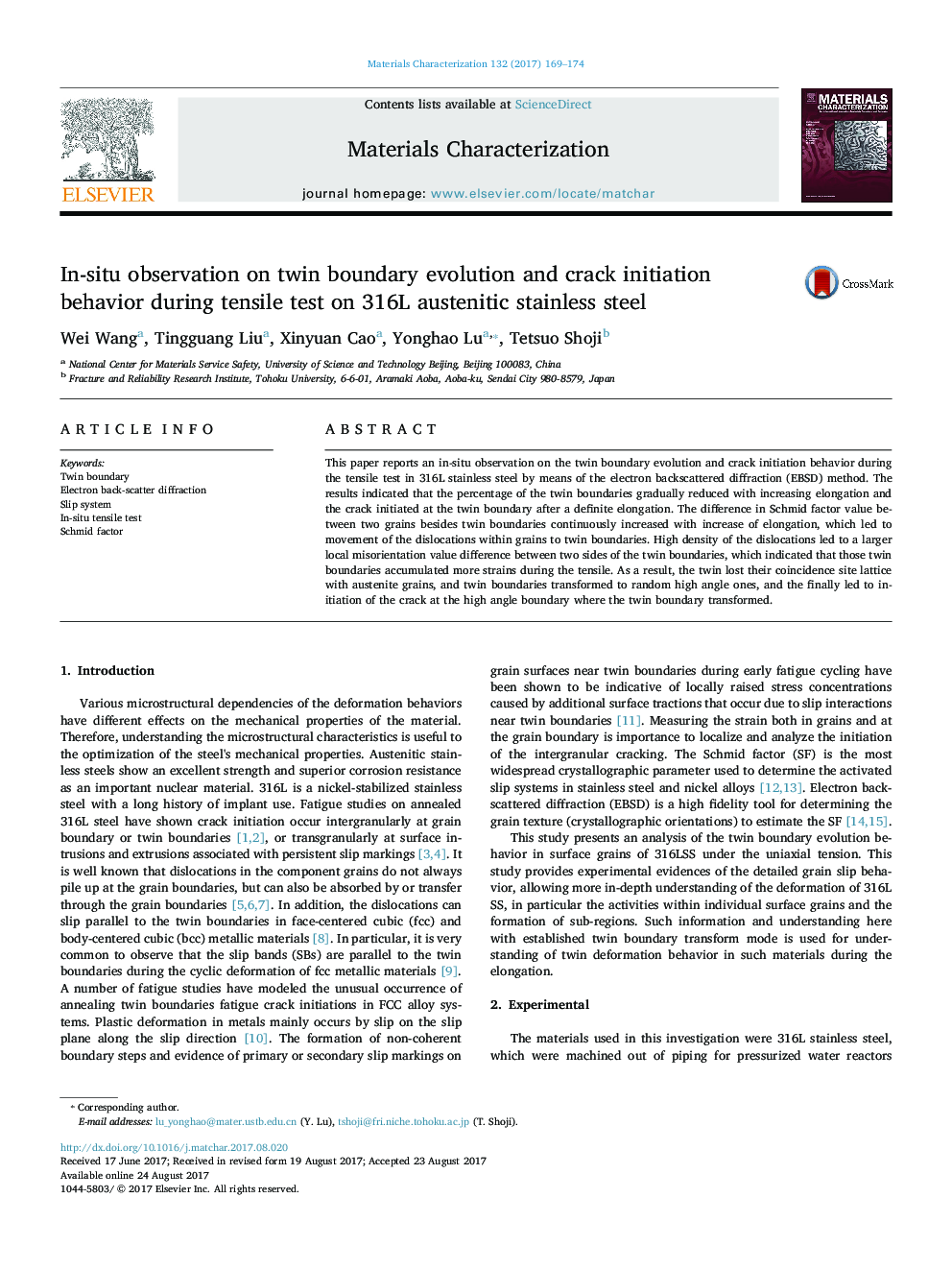| کد مقاله | کد نشریه | سال انتشار | مقاله انگلیسی | نسخه تمام متن |
|---|---|---|---|---|
| 5454645 | 1514355 | 2017 | 6 صفحه PDF | دانلود رایگان |

- The twin boundary (TB) evolution was in-situ observed by means of EBSD method.
- TBs gradually transformed to high angle boundaries with increase of elongation.
- DSF, dislocations and strain concentration are the factors for TB transformation.
- Crack initiated at the high angle boundary where the TB transformed.
This paper reports an in-situ observation on the twin boundary evolution and crack initiation behavior during the tensile test in 316L stainless steel by means of the electron backscattered diffraction (EBSD) method. The results indicated that the percentage of the twin boundaries gradually reduced with increasing elongation and the crack initiated at the twin boundary after a definite elongation. The difference in Schmid factor value between two grains besides twin boundaries continuously increased with increase of elongation, which led to movement of the dislocations within grains to twin boundaries. High density of the dislocations led to a larger local misorientation value difference between two sides of the twin boundaries, which indicated that those twin boundaries accumulated more strains during the tensile. As a result, the twin lost their coincidence site lattice with austenite grains, and twin boundaries transformed to random high angle ones, and the finally led to initiation of the crack at the high angle boundary where the twin boundary transformed.
Journal: Materials Characterization - Volume 132, October 2017, Pages 169-174